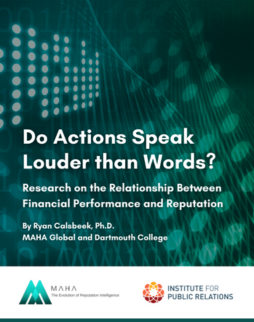
This paper provides a case study of the South African Truth and Reconciliation Commission (TRC), a six-year national initiative intended to shed light on human rights abuses and bridge the deep divides caused by decades of Apartheid, as an example of symmetrical public relations. Although many scholars, professionals, media and the general public view the role of public relations as persuasion, of convincing someone what to think, believe, or do, many observers have been proposing and exploring a relationship-based, “symmetrical” type of public relations for more than 20 years. The paper argues that the work of the TRC was an example of a “co-creational” approach to relationships, based on Excellence Theory established by Dr. James Grunig and his collaborators. It gives an example of the theory in action, explores the real-world complexities of applying the theory in a critical and volatile national peace context, and adds some practical propositions to the theoretical concept of symmetry.



